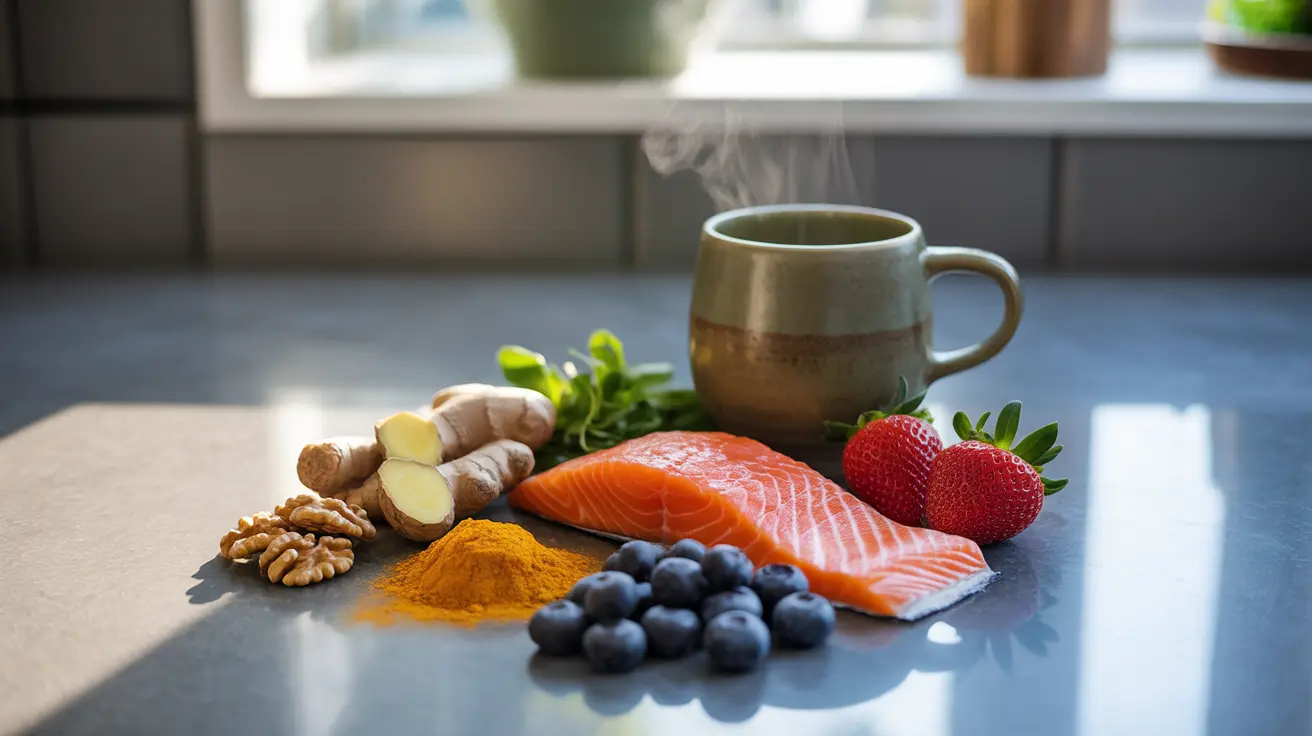Chronic inflammation is a silent contributor to numerous health conditions, from heart disease to arthritis. Understanding and incorporating anti-inflammatory foods into your diet can be a powerful way to support your body's natural healing processes and promote overall wellness.
In this comprehensive guide, we'll explore the most effective anti-inflammatory foods and learn how to harness their healing properties for better health. We'll also discuss which foods to avoid and how to create a sustainable anti-inflammatory eating plan.
Essential Anti-Inflammatory Foods for Your Diet
Omega-3 Rich Fatty Fish
Fatty fish like salmon, mackerel, and sardines are powerhouse sources of omega-3 fatty acids, particularly EPA and DHA. These essential nutrients help reduce inflammatory markers in the body and support cardiovascular health. Aim to include fatty fish in your diet at least twice per week for optimal benefits.
Colorful Berries and Cherries
Berries and cherries are packed with antioxidants called anthocyanins that give them their vibrant colors. These compounds have been shown to reduce inflammation and oxidative stress. Blueberries, strawberries, raspberries, and tart cherries are particularly effective at fighting inflammation and can help manage pain from conditions like arthritis.
Powerful Spices and Herbs
Turmeric, containing the active compound curcumin, is one of nature's most potent anti-inflammatory agents. When combined with black pepper, its absorption increases significantly. Other beneficial spices include ginger, cinnamon, and rosemary, which all contain compounds that help combat inflammation.
Green Tea and Other Anti-Inflammatory Beverages
Green tea contains powerful antioxidants called catechins, particularly EGCG, which has been shown to reduce inflammation. Regular consumption of green tea can help protect against cellular damage and support overall immune function.
Plant-Based Anti-Inflammatory Powerhouses
Leafy Greens and Cruciferous Vegetables
Dark leafy greens like spinach, kale, and collard greens are rich in antioxidants and anti-inflammatory compounds. Cruciferous vegetables such as broccoli and Brussels sprouts contain sulforaphane, a compound that helps reduce inflammation.
Nuts and Seeds
Walnuts, almonds, chia seeds, and flaxseeds are excellent sources of omega-3 fatty acids and other anti-inflammatory compounds. They also provide healthy fats and protein, making them perfect additions to an anti-inflammatory diet.
Foods to Avoid for Reducing Inflammation
To maximize the benefits of anti-inflammatory foods, it's important to minimize consumption of pro-inflammatory items such as:
- Processed foods high in trans fats
- Refined sugars and carbohydrates
- Excessive red meat
- Sugary beverages
- Alcohol (in excess)
- Processed snack foods
Frequently Asked Questions
What are the best anti-inflammatory foods I can include in my daily diet to reduce chronic inflammation?
The best anti-inflammatory foods include fatty fish (salmon, mackerel), colorful berries, leafy greens, nuts and seeds, turmeric, ginger, and green tea. These foods are rich in antioxidants, omega-3 fatty acids, and other compounds that help reduce inflammation.
How do omega-3 fatty acids in fatty fish help lower inflammation and promote health?
Omega-3 fatty acids work by reducing the production of inflammatory molecules in the body and supporting the production of anti-inflammatory compounds. They also help maintain cell membrane health and support proper immune system function.
Can eating berries and cherries really reduce inflammation and pain caused by chronic conditions?
Yes, berries and cherries contain powerful antioxidants called anthocyanins that have been shown in studies to reduce inflammation and help manage pain, particularly in conditions like arthritis. Tart cherries are especially effective for reducing inflammation and supporting recovery.
What are the benefits of using turmeric and green tea as natural anti-inflammatory agents?
Turmeric contains curcumin, which blocks inflammatory molecules and pathways in the body. Green tea's catechins, particularly EGCG, help reduce inflammation and protect cells from damage. Both substances have been extensively studied for their anti-inflammatory properties.
Which common foods and habits should I avoid because they increase inflammation in the body?
To reduce inflammation, avoid processed foods, refined sugars, trans fats, excessive alcohol consumption, and processed meats. These foods can trigger inflammatory responses in the body and counteract the benefits of anti-inflammatory foods.




